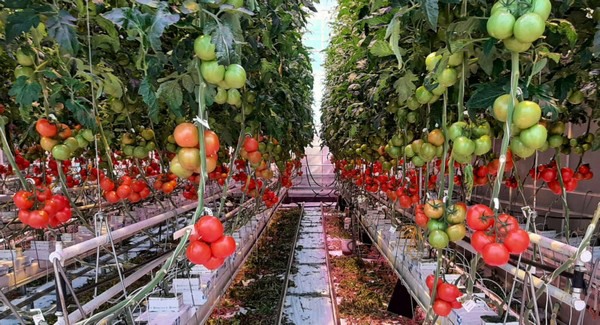Blue Radix was a project leader, together with Delphy, of the TKI project ‘The road to digital green fingers’ over the past two years. The project has developed an integrated measurement system for monitoring crop responses in real-time, aiming to support growers’ green fingers with smart, digital crop measurements. Now, the TKI project has been completed, producing a host of insights into which sensors add value to autonomous growing. Below is an overview of the project, with recommendations and conclusions.
Interpreting sensor data is often time-consuming for growers, and there’s often a lack of real knowledge about its value. Blue Radix combines the input of crop measurements with smart algorithms, which can be used to translate the data into prediction models and the necessary changes to autonomous climate control. Product Developer at Blue Radix Peter Goudswaard has been involved right from the project’s start in 2019. As Crop Advisor within Blue Radix, Jan Hanemaaijer also contributed to the project’s analyses and conclusions. The project involved a range of partners, including sensor and horticultural suppliers, seed companies, and research institutes.

Crop and sensor analysis
Peter: “Some 13 sensors were placed in a test greenhouse at the Delphy Improvement Center in Bleiswijk, and we discussed the resulting sensor data analyses every month with the project leader of Delphy Improvement Centre, Alex van Klink. There was also a technical crop meeting every two weeks. In these, the crop was assessed and the data from the sensors was checked against the status of the crop. In other words, does the crop tell us the same story as we would expect from the sensor data? Is the crop generative or vegetative, weak or strong? What direction should we steer in the coming weeks?”
Measuring crop growth
Plant sensors especially were the focal point for the Blue Radix experts. This data was plotted against the available crop and climate data, such as the available light measured in PAR, the greenhouse climate, and irrigation. Last but not least, the weekly harvests and crop actions were also registered, as these influence not just the crop status, but also the sensor data.
Notes Jan: “It’s really interesting to measure the exact increase or growth of a crop or stem per day or per week, to know how the plant is doing. But just as important is how a plant or crop behaves during the day or over a longer period of time. What effect do certain actions or climate adjustments have on the behavior or welfare of the crop? We want to know and to be able to predict how a plant behaves at any moment of the day, and what actions are needed to steer a plant in the right direction. For example, should we aim more towards vegetative or generative growth?”
Sensor data and manual measurements
“Manual plant measurements (length growth, head thickness, leaf length, flowering speed) were done once a week, but to get a good picture of the development of the plant, more, and more frequent, assessments are needed,” points out Jan.
Adds Peter: “Sensors can ensure that the behavior and status of the plant can be assessed continuously. Applying this sensor data to steer the plant in the right direction at any time is very valuable in the further optimization of autonomous growing models. We believe that Crop Controller can optimize this process and, based on a combination of plant and climate measurements, it can implement the required adjustments autonomously, resulting in a better production.”
A considerable analysis is needed to translate the data from the sensors into a practical application. The sensors do indeed provide large volumes of data, but can all that data be used in a model? Peter: “Certainly, from a research point of view. But the practical translation is sometimes difficult. That’s because the data from many sensors requires quite a bit of analysis and various crop operations have to be taken into account. For example, lowering and moving the stems puts a sensor into a different position.”
Recommendations and conclusions
“An important recommendation is that there should be standard protocols for plant sensors. This can be done with prediction models,” says Jan. “That allows any deviations in the data to be detected quickly. Right now data is still often adjusted manually afterwards, because of the crop actions that have been carried out.”
For more information: 
Blue Radix
[email protected]
www.blue-radix.com
